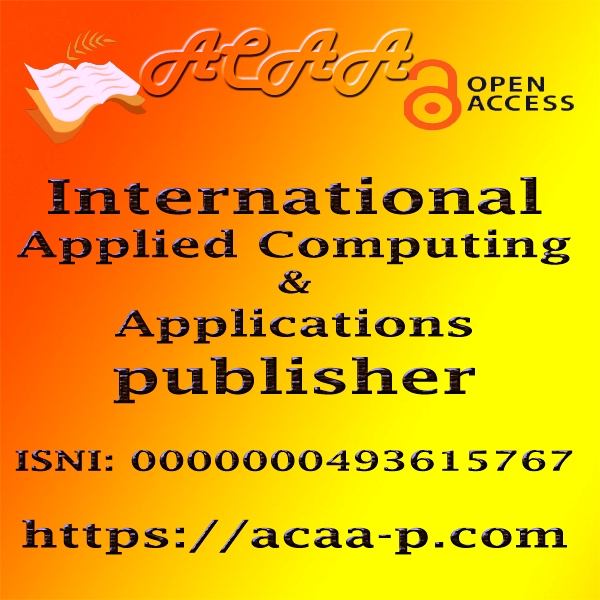Managing risk in business - abacus ltd employee
In this report, Abacus Ltd employee will offer his client guidelines, another organisation trying to comprehend risk management. Abacus gives a scope of business consultancy administrations to their clients which assist them with developing their business. Abacus's new client wants all individuals from the senior group to comprehend risk management in business and the various kinds of danger (Aven and Renn, 2010).
Assessment of drug prescribing pattern and prescription errors in elderly patients
The rate of aging is rapidly increasing and the term of geriatric refers to offer a medical care to elderly people. Drug consumption study on geriatric population is a vital issue since this group is totally neglected in Libya. The aim of this study was to assess drug utilization pattern among elderly patients in terms of world health organization core prescribing indicators and to evaluate the treatment cost. A total of 106 prescriptions were randomly collected from different community pharmacies located in Tripoli during the summer 2019, and were evaluated (total number of prescribed drugs is 359) for their clinical efficacy and safety. The findings revealed that 60 drugs acting on GIT (16.7%), 50 antimicrobial drugs (13.9%), 31 antihypertensive drugs (8.6%) and 30 drugs for respiratory diseases (8.4%) were prescribed to patients who are 65 years old or more. With regard to disease pattern in the elderly Libyan patients, 27 drugs were prescribed for diabetes mellitus (7.5%), 24 drugs for cardiovascular drugs (6.7%) and 14 drugs for anti-hyperlipidemia (3.9%). According to the WHO core drug use indicator pattern, the average number of drugs prescribed per encounter was 3.3. Prescription by generic name was low (41.5%). Antibiotics were 36.8% while injections were 26.6%. Thus, this study suggest that geriatric medicine and rational drug use should strongly be implanted in medical schools and teaching hospitals. Besides, a drug pattern use of the Libyan community is urgently required to avoid drug prescribing errors.
Primary intraosseous xanthogranuloma in adult cervical spine: a case report of benign cause of lytic bone lesion
Lytic lesions in adult spine are a common manifestation of aggressive disease such as primary bone tumor, metastasis, myeloma, or infectious pathology. Xanthoma arising in the spine with purely intraosseous component is an extremely rare occurrence with only six cases reported in the adult population, none in the cervical region. We report the first case of primary xanthoma of the cervical spine in a 50‑year‑old male solely confined to osseous compartment. The imaging mimics of lytic lesion with expansile mass in adult spine are reiterated.
Peningkatan hasil belajar pkn melalui model word square kelas 3 mis nu 2 pontianak
PKN Subject is on one of lesson implemented on SD, SMP and SMA to apply student characters and to form the student to understand and love home land also understand global life. The research background of the low student achievement on study still using lecture method, giving assignments, answer and guestion on PKN subject. The purposes of this research: 1.how student achievement on PKN subject before using word sguare model. 2. How student achievement on PKN subject after using calassroom action rescarch with quantitative approach. The sample is the students of class III MIS NU 2 Pontianak.in order to get the data, researcher using observation shett, measurement technique and documentation study.The result concluded: 1.the student achievement before using word square model the average is 53 ( good category ) with KKM > 70 as 5 or 25% and students with KKM < 70 as 15 students or 75%. 2. The student achievement after using word square on cycle 1 is 68,5 ( Better category) with KKM 55%. On the other hands, cycle 11 is 82,5 (Great category ) with KKM 90%. Mata pelajaran PKn salah satu pelajaran yang diterapkan mulai dari SD, SMP dan SMA dengan membekali karakter dan membentuk peserta didik cinta tanah air dan paham dalam kehidupan yang serba global. Rumusan penelitian ini; 1) Bagaimanan hasil belajar siswa pada mata pelajaran pendidikan kewarganegaraan sebelum menggunakan model pembelajaran word square kelas 3 MIS NU 2 Pontianak. 2) Bagaimana hasil belajar siswa pada mata pelajaran pendidikan kewarganegaraan setelah menggunakan model pembelajaran word square kelas 3 MIS NU 2 Pontianak. Metode dan jenis penelitian ini menggunakan jenis penelitian tindakan kelas dengan pendekatan kuantitatif.Subjek penelitian ini adalah siswa kelas III MIS NU 2 Pontianak. Untuk mendapatkan data peneliti menggunakan lembar observasi, teknik pengukuran dan studi dokumentasi. Hasil dari penelitian ini yaitu: 1) Hasil belajar siswa pada Mata Pelajaran PKn sebelum menggunakan model pembelajaran Word Square diperoleh nilai rata-rata sebesar 53 (kategori cukup) dengan siswa yang tuntas mencapai nilai KKM ? 70 sebanyak 5 atau 25% dan siswa yang tidak tuntas dengan nilai KKM ? 70 sebanyak 15 siswa atau 75%. 2) Hasil belajar siswa pada Mata Pelajaran PKn setelah menggunakan model pembelajaran Word Square pada siklus I sebesar 68,5 (kategori baik) dan siswa yang mencapai KKM sebesar 55%. Sedangkan pada siklus II sebesar 82,5 (kategori sangat baik) dan siswa yang mencapai KKM sebesar 90.
Implementation of big data analytics for simulating, predicting and optimizing the solar energy production
The notable developments in renewable energy facilities and resources help reduce the cost of production and increase production capacity. Therefore, developers in renewable energy evaluate the overall performance of the various equipment, methods, and structure and then determine the optimal variables for the design of energy production systems. Variables include equipment characteristics and quality, geographical location, and climatic variables such as solar irradiance, temperature, humidity, dust, etc. This paper investigated and reviewed the current big data methods and tools in solar energy production. It discusses the comprehensive two-stage design and evaluation for examining the optimal structure for renewable energy systems. In the design stage, technical and economic aspects are discussed based on a robust analysis of all input/output variables for determining the highest performance. Next, assess and evaluate the effectiveness of each method under different circumstances conditions. Then convert each qualitative indicator into a quantitative measure using extensive data analysis methods to determine the overall performance of the various qualitative variables. The paper also provides an in-depth analysis of the mathematical techniques used in measuring the efficiency of the renewable energy production system and discussing future axes of work in the field of specific energy.
Effect of occupational exposure on hematological and biochemical parameters in workers at oil and gas companies
Petroleum refineries are largest chemical industries that are responsible for emission of several pollutants into the atmosphere. Benzene and its metabolites are regarded as the most hazardous compounds that are emitted by petroleum refineries. These contribute to toxic oxidants, which cause many serious health risks to petroleum refineries workers. This study was aimed to analyze the effects of chemical exposure on hematological and biochemical parameters among workers at Zawia oil refinery and Mellituh oil and gas refinery companies. A total of 200 workers participated in this study which consisting of two equal groups (each group: n = 100). The first group consists of petroleum refineries workers and the second group consists of non-oil work civil servants serving were recruited as exposed and control subjects, respectively. The results of blood picture, liver enzymes and kidney functions were compared between the groups. Mean white blood cells counts, platelet counts, and hematocrit count were significantly higher, while the mean red blood cells count was insignificantly changed in petroleum refineries workers. While the mean hemoglobin and corpuscular hemoglobin concentration levels were significantly lower, whereas the mean corpuscular volume and mean corpuscular hemoglobin levels were insignificantly changed in petrol refineries workers. Liver enzymes and renal functions were significantly higher in petrol refineries workers. The present findings indicate that occupational exposure to benzene causes significant alterations in hematological and biochemical parameters and workers are at high risk of developing blood, hepatic or renal related disorders. Protection and frequent medical attention should be given to petroleum refineries workers.
 Mediterranean journal of pharmacy and pharmaceutical sciences
Mediterranean journal of pharmacy and pharmaceutical sciences
The effect of transformational leadership and competence on employee performance with job satisfaction as intervening variable
This study aims to see and determine the effect of transformational leadership and competence of PT Waruna Shipyard Indonesia on employee performance through job satisfaction as intervening variable. This research was conducted at PT. Waruna Shipyard Indonesia, located on Bagan Deli Street, Medan Belawan District, North Sumatra. This research was conducted of the month of August 2019-January 2020. The data analysis tool by structural equation modeling (SEM) with smartpls program. The population is employees at PT. Waruna Shipyard Indonesia in 2019, namely as many as 134 employees. This study used slovin formula for the sampling, calculations sample were respondents is 100 permanent employees of PT. Waruna Shipyard Indonesia. Thus taken 30 respondents outside of the sample to validity and reliability test instrument for testing questionnaires. Based on structural equation modeling (SEM) analysis, transformational leadership and competence have positive and significant effect on employee performance with job satisfaction as intervening variable at PT. Waruna Shipyard Indonesia. The contribution of transformational leadership, competence, and job satisfaction explains the employee performance variable of 0.724 or 72.40%. The remaining 0.276 or 27.60% is effect by other independent variables not examined in this study.
Artificial intelligence (ai) in mental health diagnosis and treatment
This article explores the increasing prevalence of mental health disorders and the pivotal role of Artificial Intelligence (AI) in diagnosis and treatment. It highlights how AI enhances diagnostic processes, continuous monitoring, and personalized mental health care experiences. The piece showcases examples of AI applications in detecting signs of mental illness through speech and video analysis, emphasizing improved accuracy for conditions like depression, Post-traumatic stress disorder PTSD, Attention deficit hyperactivity disorder ADHD, and Autism spectrum disorder ASD. Additionally, it discusses AI's role in continuous monitoring, prediction, and addressing the shortage of psychiatrists globally. The article concludes by introducing AI-based apps designed to assist individuals in managing depression, serving as complementary tools in collaboration with healthcare professionals. Overall, it underscores the transformative impact of AI on mental healthcare, offering innovative solutions for more effective, personalized, and accessible support.
N-gram-based machine learning approach for bot or human detection from text messages
Social bots are computer programs created for automating general human activities like the generation of messages. The rise of bots in social network platforms has led to malicious activities such as content pollution like spammers or malware dissemination of misinformation. Most of the researchers focused on detecting bot accounts in social media platforms to avoid the damages done to the opinions of users. In this work, n-gram based approach is proposed for a bot or human detection. The content-based features of character n-grams and word n-grams are used. The character and word n-grams are successfully proved in various authorship analysis tasks to improve accuracy. A huge number of n-grams is identified after applying different pre-processing techniques. The high dimensionality of features is reduced by using a feature selection technique of the Relevant Discrimination Criterion. The text is represented as vectors by using a reduced set of features. Different term weight measures are used in the experiment to compute the weight of n-grams features in the document vector representation. Two classification algorithms, Support Vector Machine, and Random Forest are used to train the model using document vectors. The proposed approach was applied to the dataset provided in PAN 2019 competition bot detection task. The Random Forest classifier obtained the best accuracy of 0.9456 for bot/human detection.
Survey on advanced data communication
Brilliant Grid is intended to incorporate progressed correspondence/organizing innovations into electrical power frameworks to make them ''more intelligent''. The current circumstance is that a large portion of the power outages and voltage lists could be forestalled in the event that we have better and quicker specialized gadgets and advancements for the electrical matrix. To make the flow electrical force lattice a Smart Grid, the plan and execution of another correspondence framework for the lattice are two significant fields of examination. Be that as it may, Brilliant Grid projects have just been proposed as of late and a couple of recommendations for forward-looking necessities and starting exploration work have been offered in this field. No efficient audits of correspondence/organizing in Smart Grids have been led at this point. In this manner, we direct an orderly survey of correspondence/organizing innovations in Smart Grid in this paper, including correspondence/organizing engineering, distinctive correspondence innovations that would be utilized into this design, nature of administration (QoS), upgrading the use of resources, control and the board, and so forth.
Implementation of javanese krama learning in improving students' ability to speak politely at mima 35 nurul ulum ambulu
This study examines Javanese Krama's learning in improving students' ability to speak politely at MIMA 35 Nurul Ulum Ambulu. This research approach is a descriptive qualitative approach, and the type of research used is phenomenology. Data collection techniques using interviews, observation, and documentation. While the data analysis using the model of Miles, Huberman, and Johnny Saldana consists of data condensation, data presentation, and conclusion. The results of this study are 1) Planning for learning the Javanese Krama language to improve the ability of students to speak politely at MIMA 35 Nurul Ulum Ambulu, namely: the teacher prepares a Learning Implementation Plan, prepares to memorize material for the Javanese Krama language vocabulary for students. 2) Implementation of Javanese Krama language learning in improving the ability of students to speak politely at MIMA 35 Nurul Ulum Ambulu, namely: opening, core, and closing activities. Then the habit of using Javanese manners during learning hours and outside the classroom. 3) Evaluation of Javanese Krama language learning in improving the ability of students to speak politely at MIMA 35 Nurul Ulum Ambulu, namely: in the classroom using daily questions, PTS and PAS. Meanwhile, habituation outside of learning hours is by assessing students' speech and manners. 4) The implications of learning Javanese Krama in improving the ability of students to speak politely at MIMA 35 Nurul Ulum Ambulu have a positive impact on students becoming accustomed to using Javanese Krama when communicating with teachers both in attitude and speech.
Use and impact of information communication technology based library resources and services in the universities of tamil nadu, india: a study
Libraries play a vital role in providing access to information and fostering lifelong learning in communities. With the rapid advancement of Information Communication Technology (ICT), libraries are embracing digital tools and services to enhance their offerings and extend their reach. In today's interconnected world, the utilization of Information Communication Technology (ICT) resources and services has become imperative for various sectors. This study examines the utilization of ICT-based resources and services by libraries, focusing on key technologies such as digital libraries, online databases, electronic resources, and library management systems. It explores how these technologies enable libraries to expand their collections, improve accessibility, and deliver personalized services to users. The present study is an attempt to examine uses of information communication technology based library resources and services at university of Tamil Nadu. In this paper, the majority of the users' use of ICT based resources and services are study purpose. The majority of the respondents that satisfaction of ICT based resources and services have developed academic skills.
Zootherapeutics (animal-based remedies) for urolithiasis: history, current scenario and future dimensions
Animals like plants are also medicinal agents for preventing and curing different health problems worldwide, practically in all human cultures. Zootherapy is ancient and has strong evidence of the medicinal use of animal resources. Different animal body parts and preparations are used in folk medicines. Zootherapy reveals that medical practitioners have always considered animals a source of surprising and numerous therapeutic effects. A high diversity of animals, their parts, and derivative products are used, and this is a heritage that could constitute a fundamental step in the discovery and isolation of natural extracts and new and low-cost alternative drugs from animals. About 12% of people worldwide are affected by different types of urolithiasis; the recurrence rate in females is 47-60%, and in males is 70-80%. According to WHO, 75% of the population relies on traditional medicines to prevent and cure diseases. Hence, there is a need to concentrate on all folk natural products effective in urolithiasis for their pharmacological evaluation and isolation of single drug molecules responsible for anti-urolithiasis activity to develop suitable formulations against urolithiasis.
Pengembangan program pembelajaran pendidikan agama islam dalam meningkatkan budaya keagamaan di sdn bletok bungatan situbondo
Pengembangan budaya keagamaan di sekolah merupakan suatu kewajiban yang harus dilaksanakan oleh sekolah dengan mendesain program pendidikan agama islam yang mengarah pada pengembangan budaya keagamaan. Fokus penelitian ini adalah Bagaimana perencanaan pengembangan program pembelajaran Pendidikan Agama Islam dalam meningkatkan budaya keagamaan di SDN Bletok Bungatan Situbondo? Bagaimana pelaksanaan pengembangan program pembelajaran Pendidikan Agama Islam dalam meningkatkan budaya keagamaan di SDN Bletok Bungatan Situbondo? dan Bagaimana pengawasan pengembangan program pembelajaran Pendidikan Agama Islam dalam meningkatkan budaya keagamaan di SDN Bletok Bungatan Situbondo? Penelitian ini menggunakan pendekatan deskriptif analisis, jenis studi kasus. Teknik pengumpulan data menggunakan wawancara, observasi, dan dokumentasi. Analisis data menggunakan model interaktif dan keabsahan data menggunakan triangulasi sumber. Hasil dari penelitian ini menunjukkan: 1) Perencanaan pengembangan program pembelajaran pendidikan agama islam dalam meningkatkan budaya keagamaan di SDN Bletok Bungatan Situbondo, yaitu: penyusunan buku pintar, Penugasan anggota membuat rancangan kegiatan, nilai-nilai karakter prioritas utama, rencana strategis pendekatan botton up, perencanaan pengembangan budaya keagamaan oleh tim agama. 2) Pelaksanaan pengembangan program pembelajaran pendidikan agama islam dalam meningkatkan budaya keagamaan di SDN Bletok Bungatan Situbondo, yaitu: Roling tanggung jawab job deskription pengembangan budaya, Quality Insurence (Jaminan Mutu) pembiasaan keagamaan, Model uswah guru, pelaksanaan Budaya keagamaan. 3) Pengawasan pengembangan program pembelajaran pendidikan agama islam dalam meningkatkan budaya keagamaan di SDN Bletok Bungatan Situbondo, yaitu: pengawasan internal kinerja anggota dan eksternal melalui pengguna layanan siswa dan orang tua, evaluasi supervisor sekolah terhadap kinerja anggota, anak berkepribadian sesuai dengan nilai-nilai agama, monitoring oleh komponen sekolah dan tim agama, monitoring siswa, monitoring tingkah laku dan pembiasaan siswa, penetapan capaian dari Quality Insurence.
Global business environment - healthy eating
This Document addresses the main trends around healthy eating in the global, Latin American, and Peruvian environment related to the proposed business plan. Analysis shows that with an increase in the population around the world it is important for food producing organizations to introduce new food products in order to be in the race of famous food brands. Based on qualitative and quantitative data from various sources, it is possible to know the opportunities for a plant-based burger business. This assignment aims to recognize if there is a favorable evolution for the proposal of this business plan at the different levels of the environment. The brand focused on this assignment in KFC. A plan for introducing green burgers in Peru and other regions of Latin America was developed in this paper.
Phytochemical evaluation and pharmacological screening of antiparkinson’s activity of allium sativum in swiss/albino mice
Abstract: Objective: To evaluate the Antiparkinson activity of Allium sativum in Haloperidol induced Parkinson‟s disease in mice. Method: Parkinson‟s disease was induced by administering haloperidol (2.0 mg/kg i.p.) Daily for a week. The mice were divided into 5 group (n=6). Group II received haloperidol (2mg/kg body weight).Group III received combination of levodopa and carbidopa (100mg+ 10mg/kg by i.p along with haloperidol) and Group IV and V received Allium sativum extract (200 and 400mg/kg by p.o), respectively for 7 days along with haloperidol. To evaluate the antiparkinson effect of Allium sativum, catalepsy bar test, rotarod test, hang test and horizontal bar test were used. One way ANOVA was used to test statistical significance followed by Bonferroni multiple comparison tests .Results: Allium sativum extract (200 and 400mg/kg by p.o) was found to decrease the duration of catalepsy significantly (P<0.001) in catalepsy bar test as compared to haloperidol group, and significantly increases (P<0.001) fall off time in, rotarod test, hang test and horizontal bar test respectively as compared to haloperidol group. Conclusion: The result of the present study conclusively shows the Antiparkinson‟s activity of Allium sativum in haloperidol induced Parkinson‟s disease in mice.
In vitro microscopic study of calcium hydrogen phosphate dihydrate crystals growth patterns
The study aims to explore the possible morphological features of calcium hydrogen phosphate dihydrate (brushite) crystals on a glass slide. The study was conducted on a glass slide under a microscope to observe the growth patterns. As a result, needle, platy, star shape, and tetragonal bipyramidal crystals were observed. Different patterns of platy crystals, like plates with spatial branches and radiating assemblages of platy crystals, were also found.
Phytochemical screening, antibacterial and anti-diabetic activities of moringa oleifera cultivated in east region of libya
Moringa oleifera, a very important healthful plant, is one amongst the foremost wide cultivated species of the family Moringaceae. It's extremely valued from past as a result of its large healthful properties. Moringa oleifera, native to India, grows within the tropical and climatic zone regions of the globe. It's commonly called drumstick tree or horseradish tree. Moringa will face up to each severe drought and gentle frost conditions and, therefore wide, cultivated across the globe. With its high alimentary values, each part of the tree is appropriate for either nutritional or commercial purposes. The leaves are rich in minerals, vitamins and alternative essential phytochemicals. Extracts from the leaves are useful in treatment of anemia, enhance breast milk in wet mothers. It's used as a potential antioxidant, anti-cancer, anti-inflammatory, anti-diabetic and antimicrobial agent. Thus, this study was aim to investigate the phytoconstituents from ethanolic and aqueous extracts of the Moringa oleifera cultivated in Libya and to assess its anti-bacterial and anti-diabetics activity. The phytochemical investigations of these extracts of Moringa oleifera revealed the presence of alkaloids, carbohydrates, flavonoids, saponins, steroids, tannins and phenolic compounds. The antibacterial activity of cold and hot extraction of methanolic and water extracts of Moringa oleifera by using the well diffusion method were assessed. Results revealed that there was a profound antibacterial activity of the studied Moringa oleifera against representatives of Gram-positive bacteria. After in vitro evaluation of anti-hyperglycemic properties of the ethanolic extract of Moringa oleifera by testing its capacity to inhibit α-amylase activity, the methanolic extract exhibited inhibitory effect on the α-amylase enzyme.
 Mediterranean journal of pharmacy and pharmaceutical sciences
Mediterranean journal of pharmacy and pharmaceutical sciences
Impact of frontline demonstrations on chickpea (cicer arietinum) production, productivity and profitability in transitional plain of inland drainage zone of rajasthan
Pulses are well known richest source of vegetable protein and poor man’s food because of its essential component of diet. The frontline demonstrations of chickpea crop was carried out by Krishi Vigyan Kendra, Nagaur-I, Agriculture University, Jodhpur during rabi seasons from 2011-12 to 2019-20 on 178.5 ha area with 382 demonstrations in different clusters of Nagaur district of Rajasthan. The results shows that demonstrations produced on an average 18.02 q/ha grain yield of chickpea, which was 24.18 per cent higher as compared to prevailing farmers practice (14.51 q/ha). The front line demonstrations fetched more average gross returns (Rs.60161/ha), net return (Rs. 37963/ha) and B:C ratio (2.76) with slightly higher investment on cost of cultivation (Rs.1663/ha) as compared to farmers practice. The increase in gross and net returns was in the tune of Rs.11960 and Rs. 10285 per hectare with incremental benefit: cost ratio of 0.33. The average extension gap, technology gap and technology index was 350kg/ha, 608 kg/ha and 25.2 per cent, respectively. It is also observed that majority of the respondent farmers expressed high (51.83%) to the medium (32.72%) level of satisfaction regarding the performance of chickpea under demonstrations
Purchase decision in e-commerce: utilising celebrity endorsement, advertising appeal, and e-word of mouth
Marketing has now adopted technologies in the attempt to increase brand recognition. Due to the COVID-19 pandemic, many companies suffer, yet many even reap more profits, such as e-commerce. The purpose of this research is to figure out whether Celebrity Endorsement, Advertising Appeal, and Electronic Word of Mouth have influence towards customer’s Purchase Decision in one of popular e-commerce in Indonesia called Bukalapak. Through the non-probability sampling type, particularly purposive sampling approach, one hundred respondents are taken as samples. The method in this research is descriptive and causal, and the research type is quantitative research. The data analysis methods used are descriptive statistics, coefficient of correlation, coefficient of determination, linear regression analysis and hypothesis testing through T-Test and F-Test. The T-test shows that Celebrity Endorsement, Advertising Appeal, and Electronic Word of Mouth partially influence the Purchase Decision. The F-Test result shows that all independent variables simultaneously influence Purchase Decision. Out of all, Celebrity Endorsement has the biggest influence on Purchase Decision. The value of coefficient of determination obtained is as much as 80.6% indicating that the customer’s Purchase Decision in Bukalapak is explained by Celebrity Endorsement, Advertising Appeal, and Electronic Word of Mouth. The recommendation given is to ensure the company uses talented and well-known celebrity endorsers, design attractive and unique advertisement, and maintain satisfactory performance to encourage complimentary reviews on its platform.
Most Popular Category
- Pharmacy (233)
- Education and social science (201)
- Pharmacology (200)
- Pharmacognosy (169)
- Business management (140)
- Pharmacology and toxicology (128)
- Pharmaceutical sciences (119)
- Education and training (111)
- Research (110)
- Medicine (110)
- Management (95)
- Health Science (92)
- Human resource management (83)
- Biological Sciences (82)
- Computer Science (76)
- Computer Science Applications (71)
- Accounting and finance (63)
- Information technology (57)
- Public health (55)
- Pharmacy practice (54)
 Zamzam abdelazim
Zamzam abdelazim
 Fathi m. sherif
Fathi m. sherif
 Educare: journal of primary education
Educare: journal of primary education
 Acaa pub
Acaa pub
 Lila maria kaban
Lila maria kaban
 Dhruvitkumar talati
Dhruvitkumar talati
 Dr.a.shaji george
Dr.a.shaji george
 Dr. salman ahmed
Dr. salman ahmed
 Dr. babu lal jat
Dr. babu lal jat